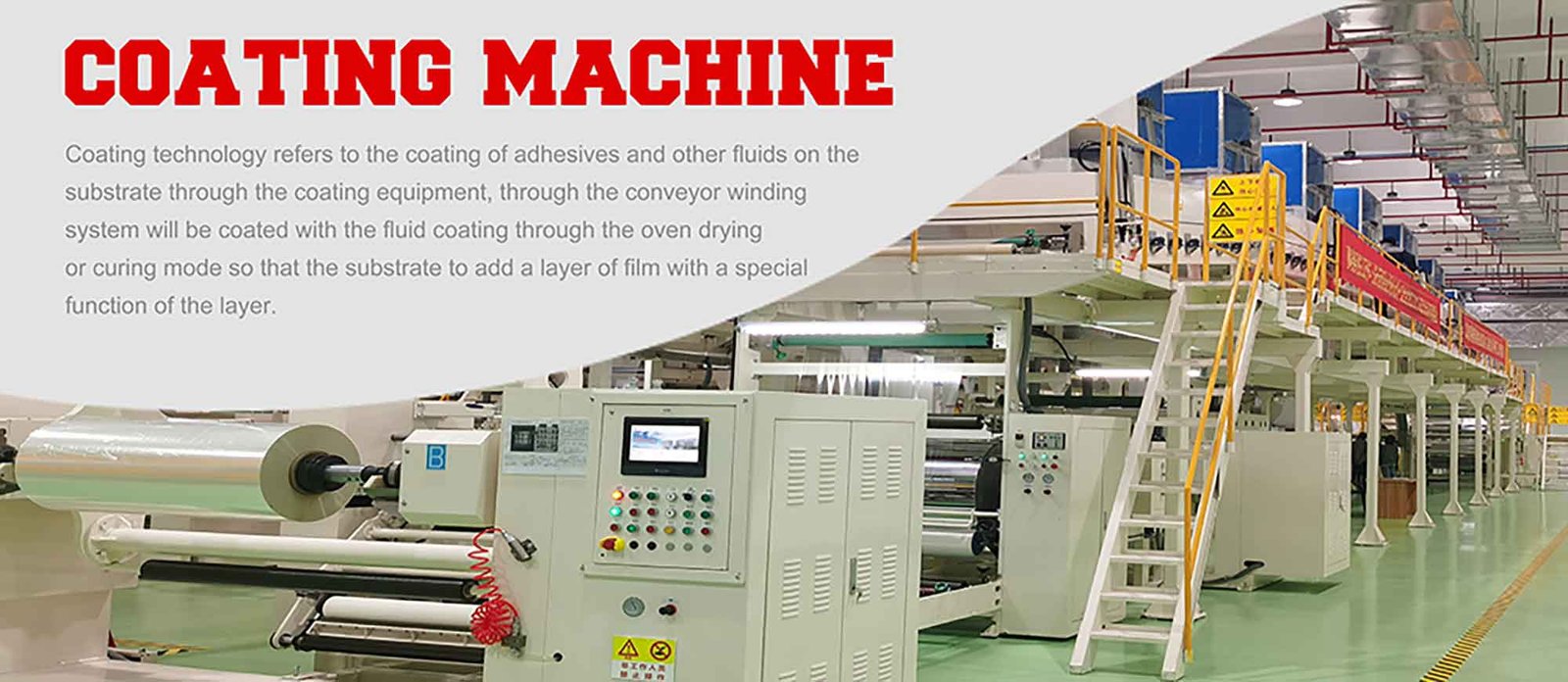Definition of coating:
Coating technology refers to the process of applying adhesive or other fluid materials onto a substrate using coating equipment. The coated substrate is then passed through an oven for drying or curing via a conveying and winding system, resulting in the addition of a specialized functional layer onto the substrate.
With the development of industrial manufacturing, improvements and innovations in coating technology have led to increasingly widespread applications such as industry, public welfare electronics and optoelectronics, communications, new energy, packaging, construction, etc.
Coating applicating
According to the purpose of coating, coating is divided into two types:
1. Adhesion and release.
2. Functionalization.
Coating is used in adhesive and release industries such as: adhesive tape, protective film, composite film, self-adhesive, release materials, sanitary materials, medical materials, advertising materials, etc.
Coating is used in functionalization industries such as: optical film, color-changing film, window film/car film, lithium battery, water treatment, printed circuit board, etc.
Coating machine composition:
The coating machine consists of five major parts: coating system, transmission system, curing system, unwinding and rewinding system and control system.
1, Coating system
The core components of the coating machine include coating rollers, die heads, ink tanks, feeding systems, etc. The function of the coating system is to evenly coat printing ink or coating on the substrate to achieve product processing and printing. The coating system occupies a very important position in the entire coating machine.
2, Transmission system
It includes parts such as motor, reducer and main shaft. The main shaft is rotated through the transmission system to drive the rotation of the coating roller. The transmission system is a key component of the coating machine and plays a decisive role in the performance and efficiency of the machine.
3, Curing system
The unwinding and rewinding system is the discharging and winding part of the coating machine, including the rewinding roller, tension control system, deviation control system, coil support, etc. The function of the unwinding and rewinding system is to roll up the unloaded materials and processed materials for easy storage and transportation. The system requires stable operation, fast speed and uniform tension to meet production needs.
4, Unwinding and rewinding system
The function of the curing system is to solidify the coated substrate fluid. Current curing methods include oven curing, infrared heating, microwave heating, ultra violet curing and electron be

How the coating machine works
There are two working methods of the tape coating machine. One is to add a drying process after coating, and the second is to apply photosensitive emulsion on the screen through multiple wet-on-wet operations. The tape coating laminating machine is a machine that quantitatively applies liquid (or melt) polymer materials such as adhesives or coatings on the surface of the material.
Scope of application:
The tape coating machine is suitable for coating acrylic glue, silicone, rubber, PU glue, hot melt glue, etc. on soft substrates such as PVC, PE film, PET film, release paper, etc.
The tape coating machine is specially used for the coating production of double-sided tape, kraft paper, advertising paper, BOPP sealing tape, textured paper, and trademark paper.
Feature of product:
1. The equipment adopts computer frequency conversion speed regulation, which can be single action/linkage;
2. Automatic edge alignment, magnetic powder brake tension control and material discharging;
3. The reasonably designed and precisely processed gluing system ensures uniform gluing of materials;
4. The heating method can be selected according to customer needs: electric heating tube heating or high-temperature thermal oil heating.
Work process:
The working process of the tape coating machine is to coat a rolled base material, such as paper, cloth, leather, aluminum foil, plastic film, etc., with a layer of glue, paint or ink with a specific function, and then dry it and wind it up.

Working principle:
Both ends of the tape coating mechanism are mounted on the vertical support arms of the coating machine. Driven by belts, chains or cables, the coating mechanism moves up and down to coat along the surface of the screen. The transmission mechanism is connected to a servo or variable frequency motor, making it operate smoothly and accurately control the position of the coating mechanism.
The working principle of the automatic coating machine used for screen printing plate making is the same, but its performance varies according to different machine models and different manufacturers. The screen coating machine is equipped with a device that can clamp the screen frame on the vertical frame. Behind the screen area is a horizontal coating mechanism. This coating mechanism consists of a coating groove, as well as mechanical components or pneumatic components that control the angle and pressure of the coating groove.
Before coating, load the clean and stretched screen from the front of the coating machine. Some models can also load the screen from the side. Among the models designed for large-format screen frames, side-mounted plates are more common because the screen frames are large and bulky. Side-mounted plates can reduce the amount of lifting and moving. When the automatic screen coating machine is operated online with other automatic screen processing equipment (such as cleaning equipment, regeneration equipment, drying equipment and developing machines), it is more convenient to load the plate from the side.
No matter how the screen is installed, once the screen is in the correct position, the pneumatic or mechanical clamping device closes, locking the screen. In order to make the operation more convenient, many models have foot pedals to control the plate clamping action, so that the operator can free his hands to control the screen plate.
After installing the screen plate and pouring the corresponding photosensitive emulsion into the automatic coating machine, coating can begin. Depending on














